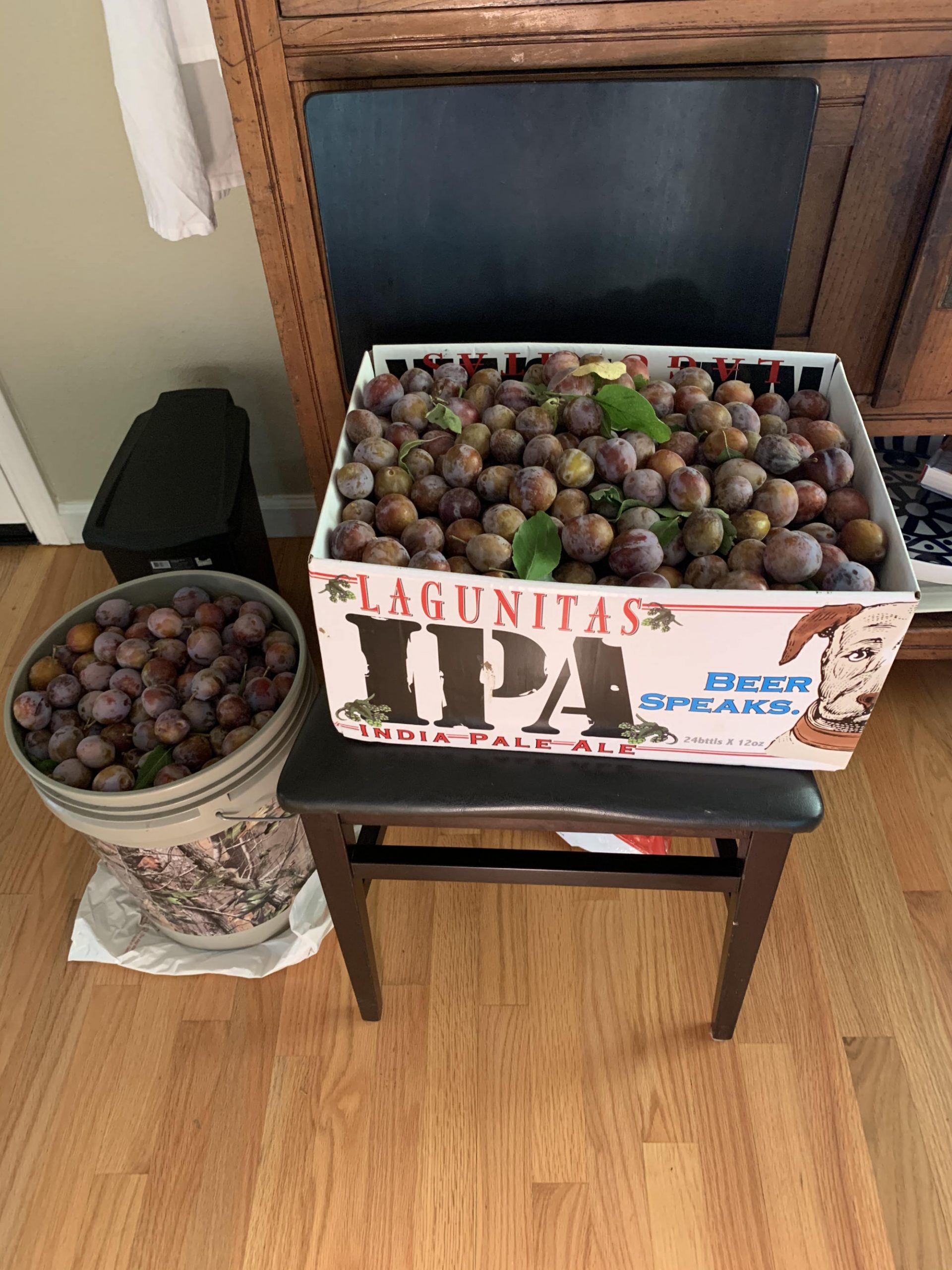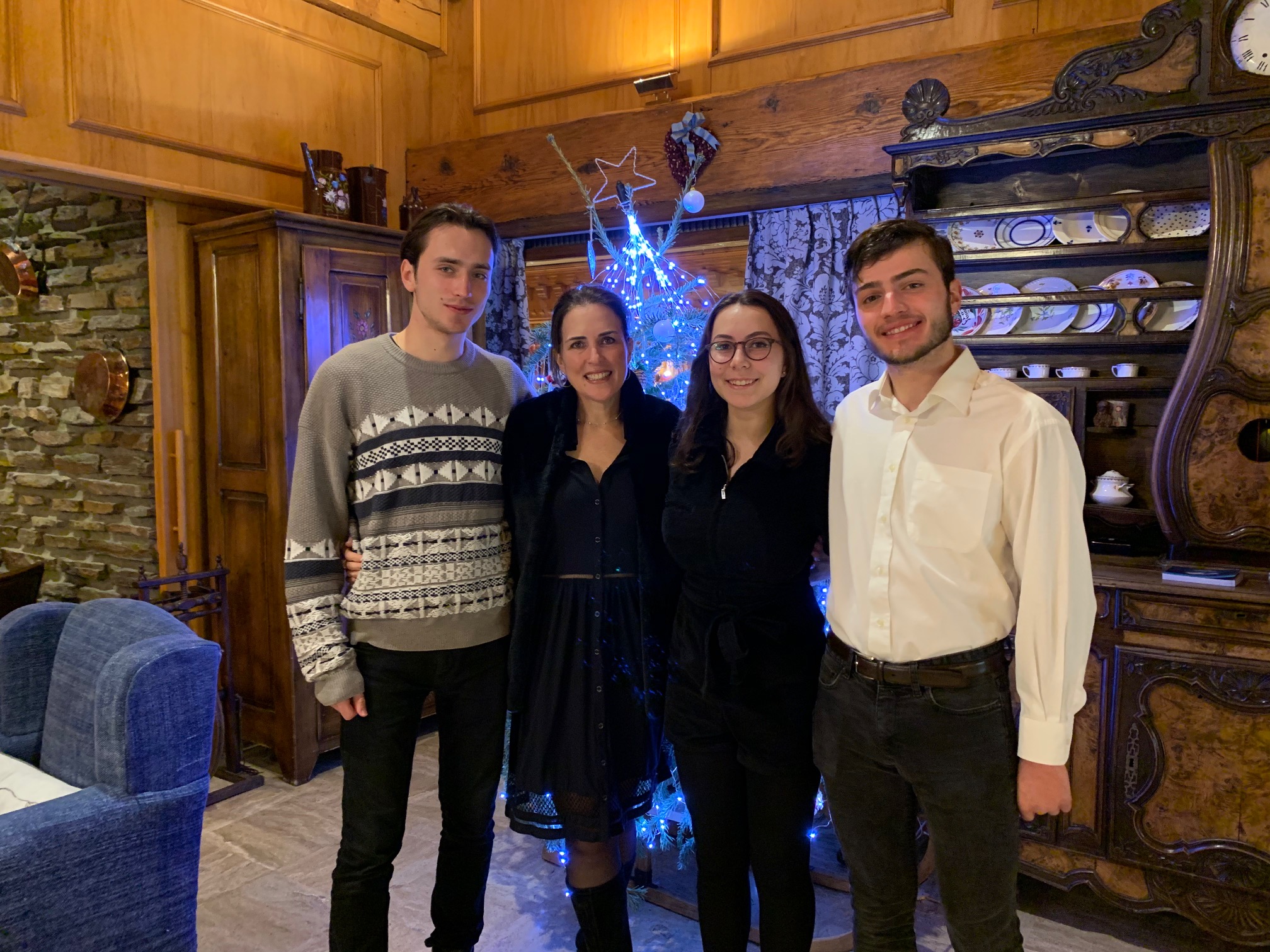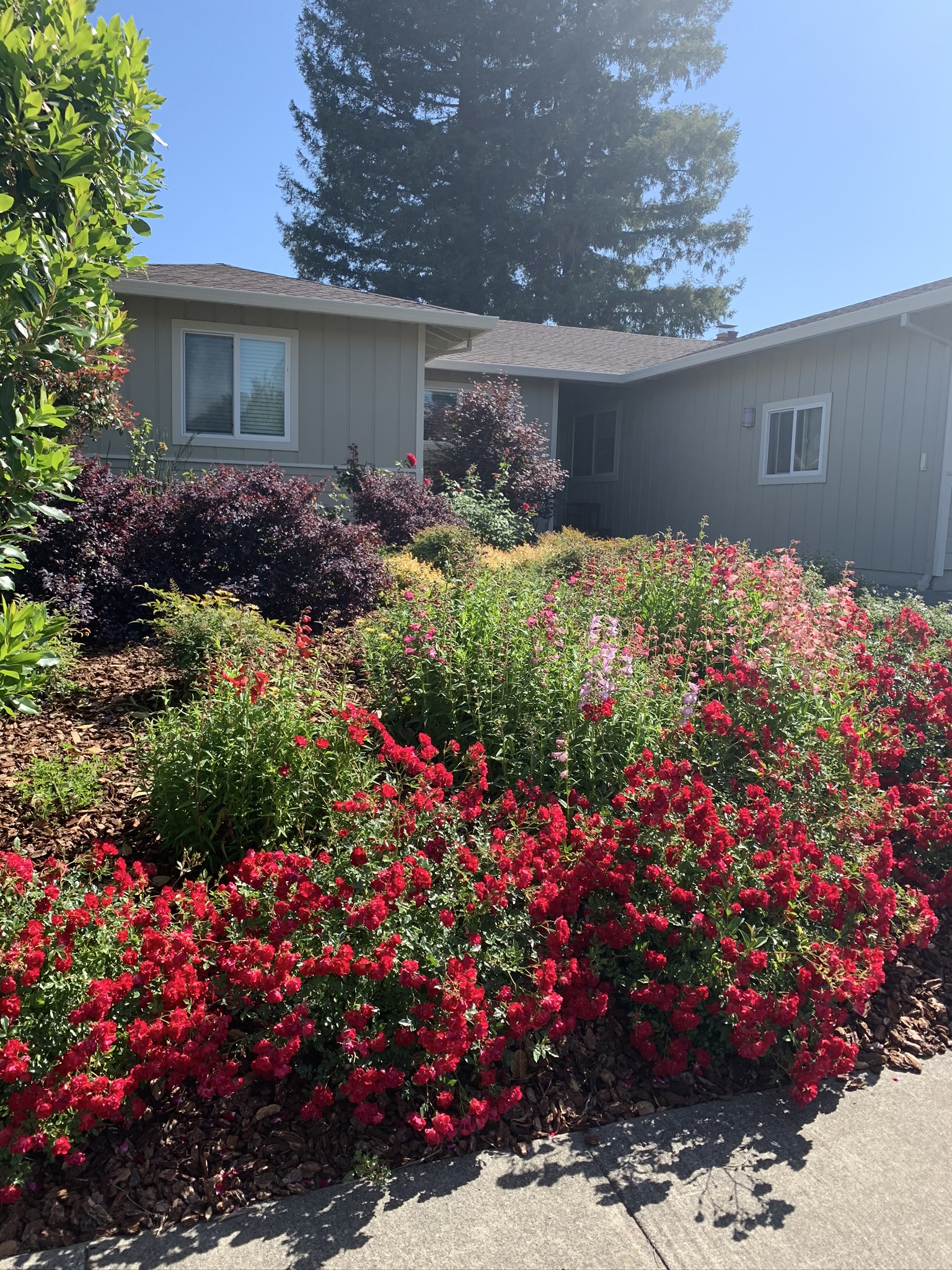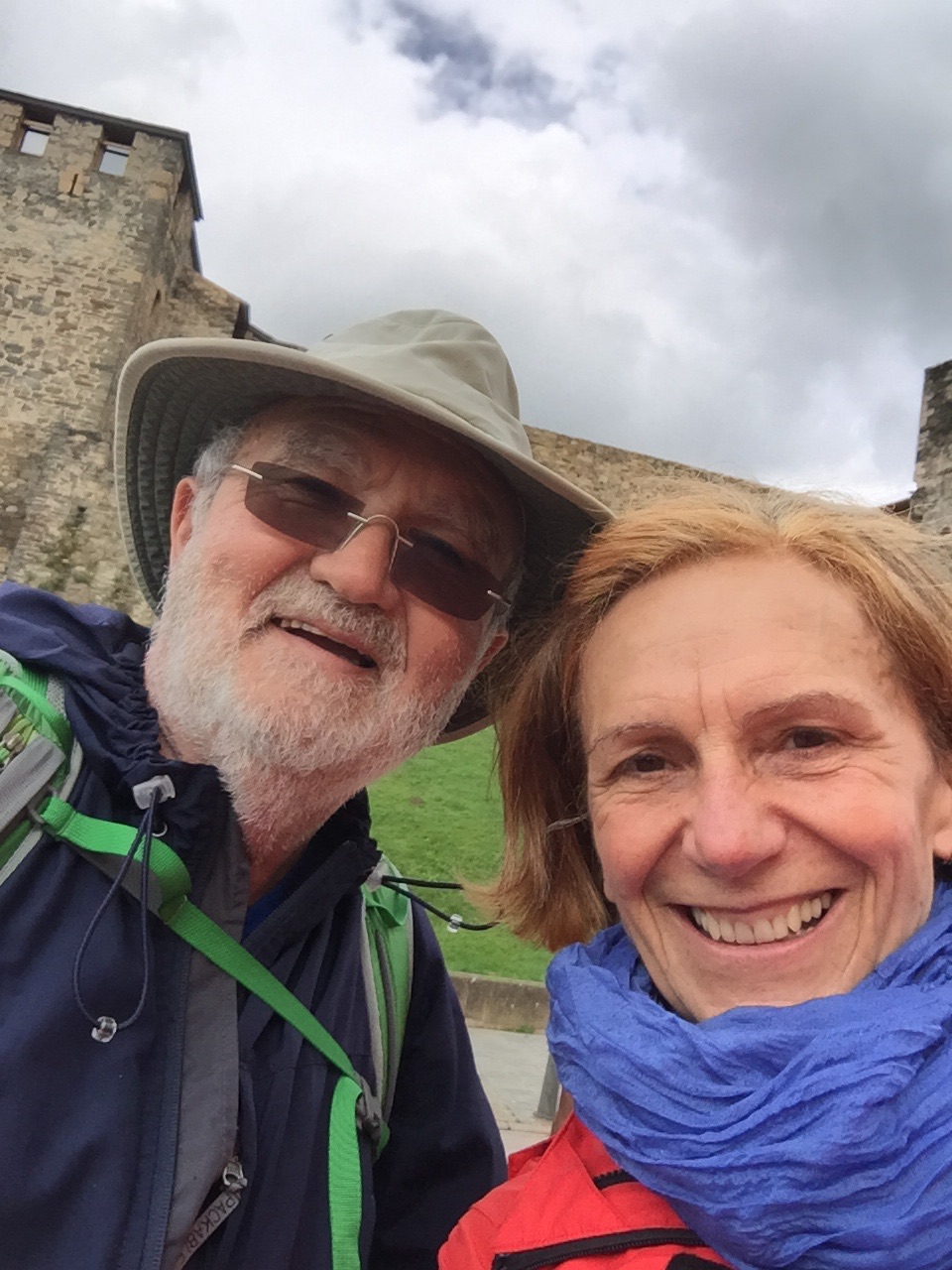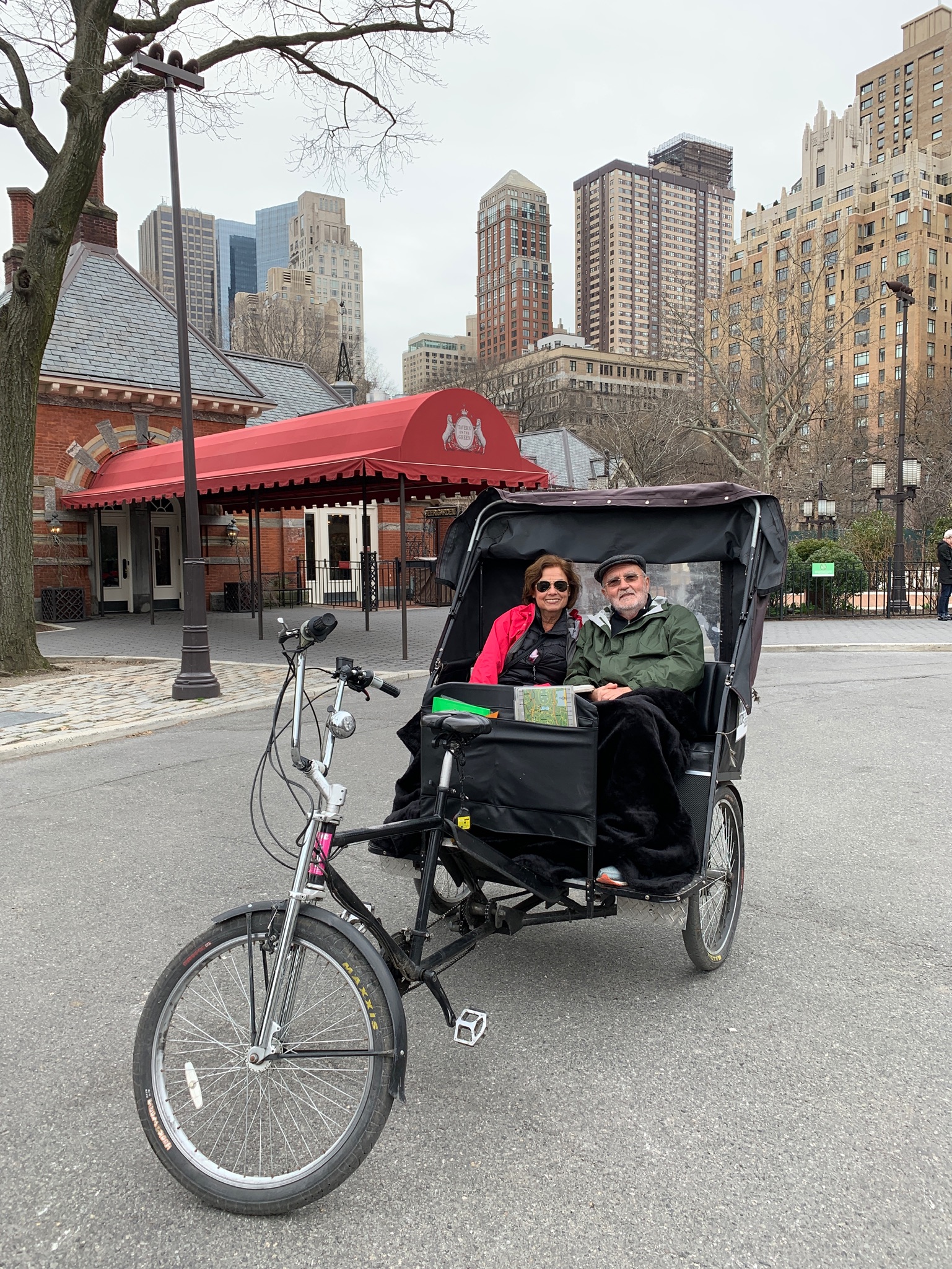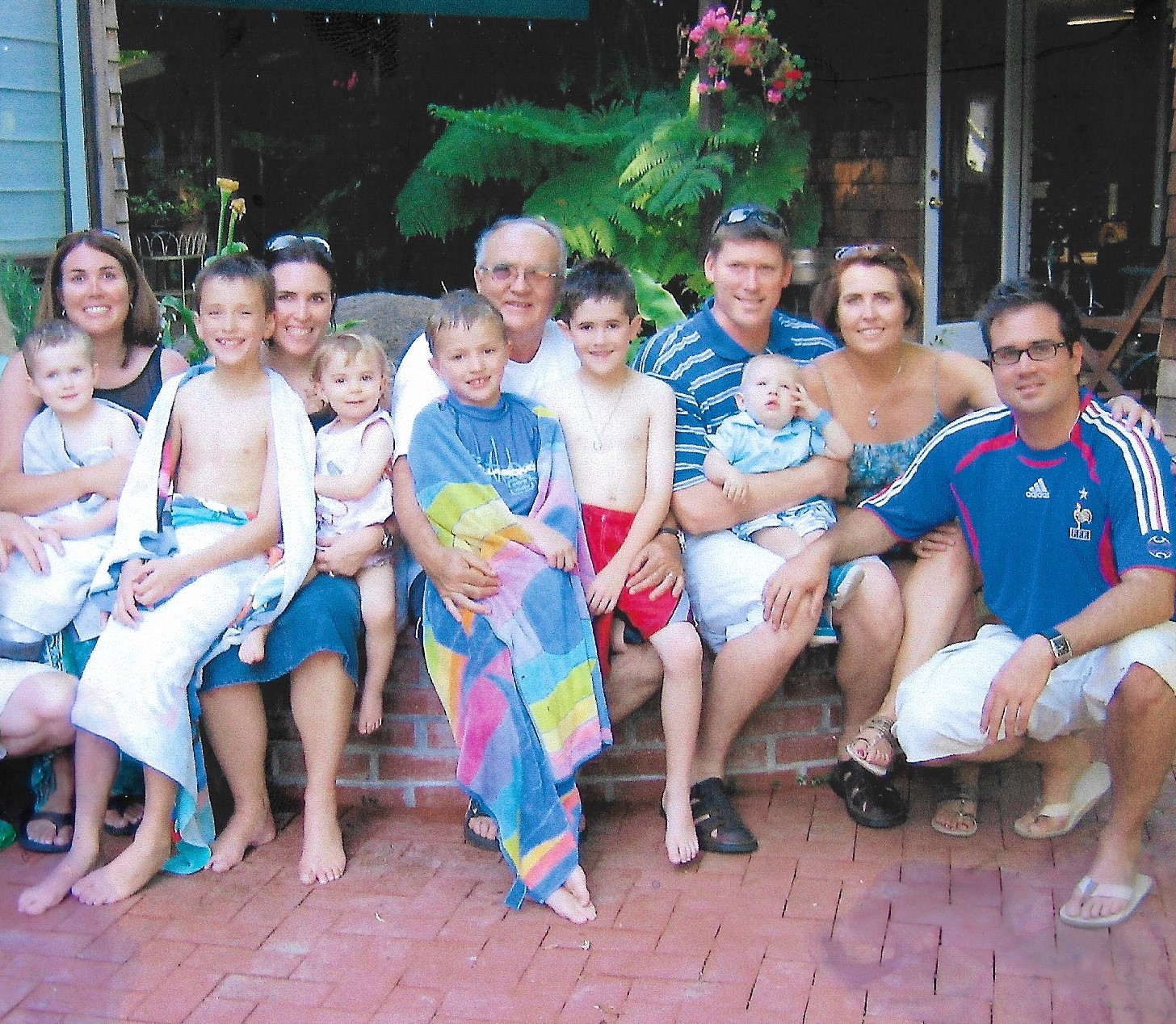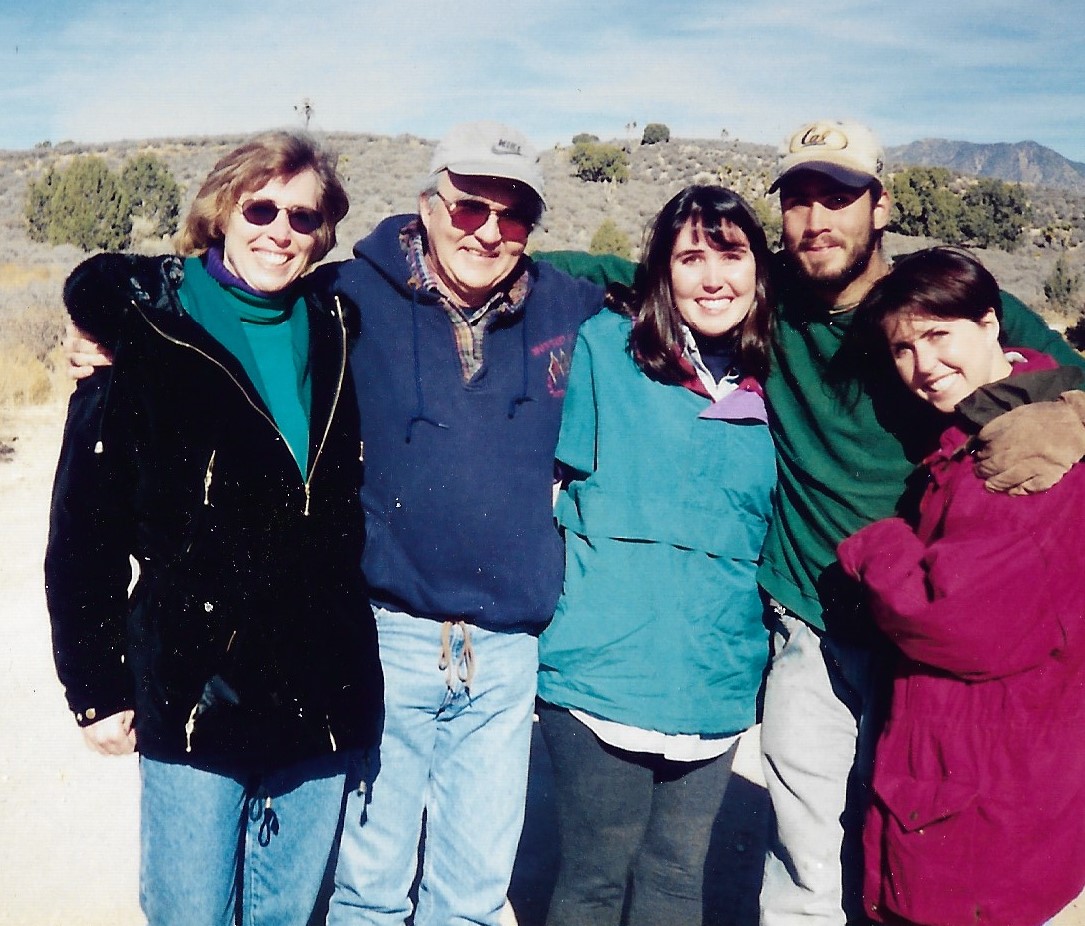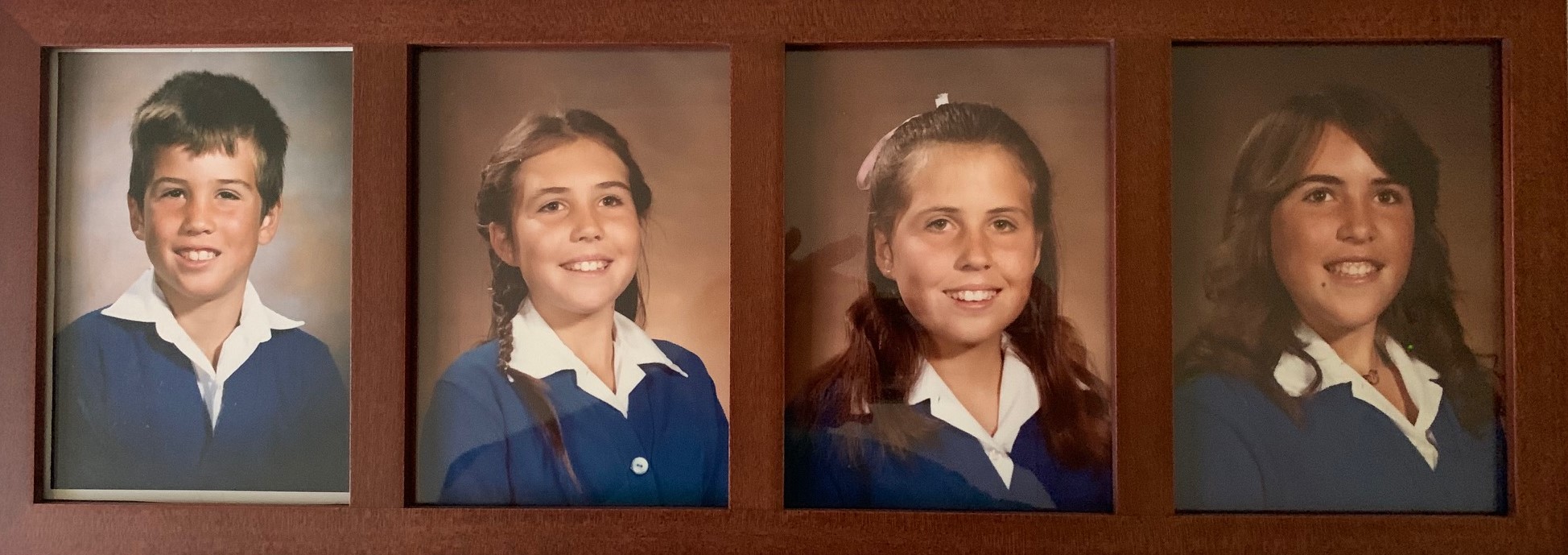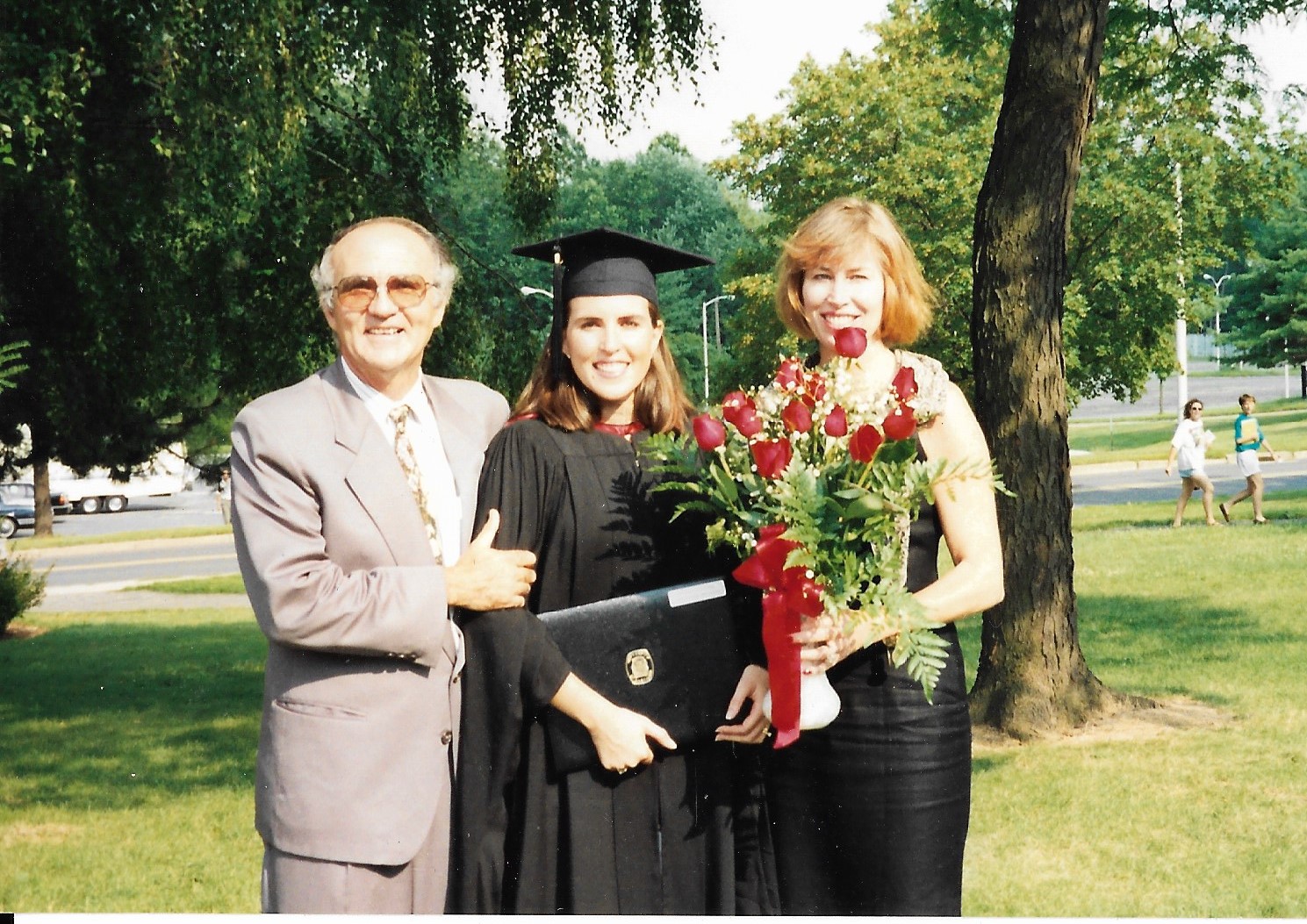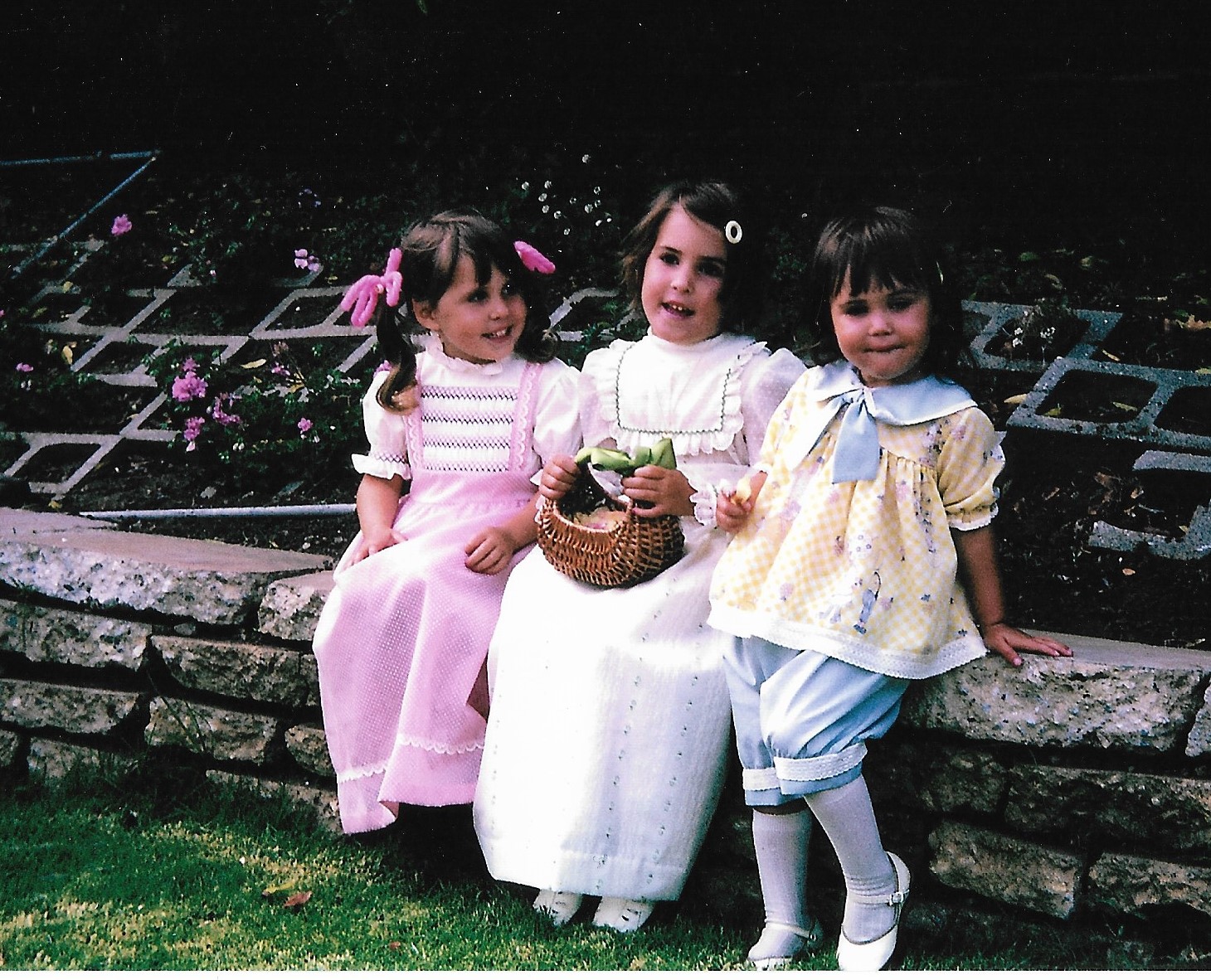It all started when Nick and I walked a section of the Camino de Santiago a few years ago. In the fall of 2016, I attended the wedding of Amendine, Marie-Helene’s daughter. Marie-Hélène and I talked about the Camino in Spain and agreed to meet in Spain in May of the next year, to walk for a couple of weeks. I arrived at our hotel in Santiago de Compostella first. Tired after the long flight, I decided to nap on one of the beds in our room. Later on that afternoon, Marie-Hélène arrived from Germany and the desk clerk took her to the room. As he opened the room door, he said, “Your husband is here already.” And she replied, “He is my uncle.” We only heard a disapproving, “Oh…”
The next day we took a bus to Ponferrada, about 200 km from Santiago. We were on our way to an incredibly satisfying journey. We met a lot of nice pilgrims along the way, and enjoyed a mug of the local draft beer, Galicia, outside an old house converted into an albuerge, a place to eat and find bunk beds in a dormitory room. Marie-Hélène always slept on the top bunk, often above me. We admired centuries-old churches and monasteries, walked along trails used by pilgrims since the Middle Ages. We walked side by side, often in silence, and sometimes reflecting on the family dynamics that shaped our lives. She had to escape the world she grew up in as I had also. We did not belong there. We talked a lot about the difficulties we experienced with our parents and siblings. We agreed that we cherish going back to our roots but we are very appreciative to live freely abroad.
One day we left our hostel at 6:30 a.m., knowing we had to walk 27 km in rather hilly countryside. After about an hour, we entered a tiny village, La Faba. Being hungry and needing coffee, we knocked on the door of a small albuerge run by a young Brazilian couple who previously had powerful jobs in London; walking the Camino convinced them to leave their busy life to be host to pilgrims. It was a small place, an ancient parish house, and quite rustic. We could have stayed longer but what a gift it was.
We arrived in Santiago, happy to see and wish good luck to a few pilgrims we had met along the way. We realized that we are part of a big international Camino family. It was my birthday and Marie-Hélène treated me to an elegant paella dinner. Life was getting much better than I ever imagined.
We had a few days left before we had to board our flights back. Naturally we went to Fistera and Muxia for two more days of walking. These fishing villages are truly the end of the Camino. Then it was time to say goodbye, sad and happy at the same time.
That fall Cristina, originally from Colombia, entered my life. We quickly made some plan to walk in Spain. Marie-Hélène, her niece Pauline, a German friend named Merita, Cristina, and I met in the Pays Basque at my niece Muriel’s country home the following May. All five of us pilgrims were excited to get going. We spent the first night in Roncesvalles, a huge medieval complex, full of history. (For example, Charlemagne’s rear army was destroyed by the Basques as it was returning to France, after it had damaged the walls of Pamplona, in 778.) The next morning at 6 o’clock, we were awakened by boisterous volunteers playing the banjo and singing “good morning” at top of their lungs, walking up and down the halls.
We happily started the trail. Pauline had to stop to greet the horses, whispering to them as they reached over the fence to receive a hug and kiss from her. At the end of the day, Merita, our German friend, would announce “beer”–about the only English she knew. Of course, Cristina would converse in Spanish with locals and pilgrims from Latin America.
Pauline left us first, wanting to be with her Grandmother, my sister, for her birthday. When we reached Burgos, Marie-Hélène and Merita took a bus to Madrid and flew back to Germany. Cristina and I kept on going past León. One afternoon, arriving in a typical village and chatting with locals in a bar, we learned that day was the feast of San Isidro, patron saint for harvest. After Mass, we joined a procession outside the village to a newly planted corn field, which the locals blessed, hoping for a good harvest. We were invited to dinner by the locals, but we had a reservation at our albergue. We marveled at storks’ nests on top of fireplaces but mainly on church steeples. After three weeks, we left the Camino. Muriel met us in Irun between France and Spain and the next day we went to Gironde to visit Michel and his wife Martine. My sister, suffering from a chronic illness requiring her to receive a blood transfusion almost weekly, was quite weak. One evening, Cristina and I were invited to Marie-Claire’s house for dinner. She is my tennis friend Philippe’s sister. We went to the elementary school in Rauzan together and she recalled how messy I was as a kid with my fingers always covered with ink from the ink well. We stayed in Paris for a few days, walking along the Seine and exploring bistros in Caroline’s neighborhood.
Summer 2018, we celebrated Caroline and Martin 25th anniversary along with Nick’s 40th and my 75th birthday. It was a fun evening party with family and close friends, good food, good wine and a lot of cheers.
I went back to France in the fall to say good bye to Rosy. I sensed that she was ready and a few weeks later she passed. The previous day, she was taken to the nearby hospital so she could be comfortable; knowing the end was near, she told her son Frank, “I leave my kingdom and I am going to the paradise.” Nick flew back with me for the funeral. It was a very well-attended funeral mass and she was buried in the family plot in Rauzan. Her children arranged a reception at Augey, the property where I grew up, which was turned into a B&B by the current owners. I got to reconnect with people I had not see for years, including Lisiane, the daughter of my parents’ farm manager, my playmate from seventy years ago. The past was rushing through me.
The year 2019 was special. I was curious about the ancient trails, GR, as they are designated in France, which eventually connect with the two Caminos of northern Spain. I met my niece Muriel at Gare de Lyon, in Paris, in early May to start our walk from Le Puy en Velay. She took two weeks off from her practice as a midwife in Hasparen to be with me, which was wonderful. There were relatively few people, some as pilgrims but also many who like walking village to village for a few days. We had long conversations about her childhood, her dad, my brother Bernard, being a lot stricter than I imagined. One day I was telling her how Bernard, as a young boy, was showing me how, with a blade of grass, we could convince a ground cricket to come out of his hole. And thirty years later, laying down flat on his stomach he was showing his daughters how to do it in the meadow in front of the house. Precious memories!
We encountered snow, cold rain, and gusty wind, but at the end of the day, a friendly hostel with good country French meals. We especially enjoyed Conques, a medieval, well-preserved village with a marvelous abbey. After dinner a local monk explained at length the significance of the intricate carvings over the massive church doors.
A few days later, we arrived in Figeac, and had a delicious late lunch along the Cele’ River. The next day Muriel went back home. I continued walking for two weeks, enjoying Roman style churches along the way, praying, being thankful for these good times. I was discovering France at a slow pace, admiring the countryside I never saw before. One time I was amazed to discover delicate, pale blue butterflies. It was cherry season and I bought some from a farmer working in his orchard who reminded me, “They don’t get harvested by themselves!”
I arrived in Condom and the next evening I was to meet Cristina in Toulouse, as she was coming from Barcelona. There was no train in Condom and no convenient bus to Agen, the nearest train station. As I did when I was a teenager or in the military service, I stuck my thumb out on the side of the highway and an hour later I was in Agen. Great memories!
We had rented a cottage in Luberon, in the village of Vaugines, a quiet place in Provence. That Sunday we went to mass at the Abbey of Senanque, a working monastery founded in the 12th century and still occupied by Cistercian monks. We were treated to Gregorian chants throughout the liturgy. What an experience! When I had visited the abbey with my parents, my dad declared, “No other compares.” The highlight of our trip was Carrières de Lumières, where paintings by Van Gogh, Cristina’s favorite artist, are projected on the walls, ceiling, and floor carved out of “les Baux” (bauxite). We were totally immersed in his paintings.
As we were driving to Bordeaux we stopped in Cap D’Agde on the Mediterranean to see my nephews Frank and Hughes. We stayed at Martin’s country home on the Dordogne River for a week. Bernard and Helia join us for a few, fun days, having elegant dinner at Michel’s house, a day trip to the picturesque town of Sarlat.
Then we were on to Paris for a few days. Valerie, a fan of women’s soccer, had come to Paris for the World Cup. One balmy evening we all went to watch a game, the stadium Park Des Princes being walking distance from Caroline and Martin’s apartment. Too soon, it was time to fly back to California.
That fall Cristina and I went back East to Rutgers University where Max was in a play, part of his work as a Fine Arts Major student. We met most of his fellow students in the program along some of the parents. We took the train to New York, and rode a horse-drawn carriage through Central Park. A fabulous week!

